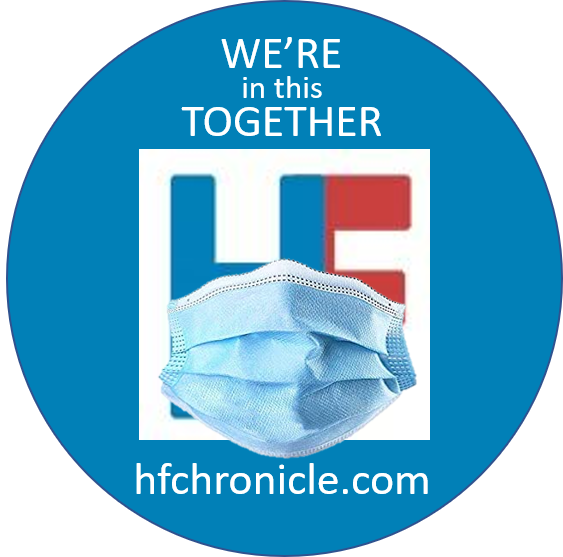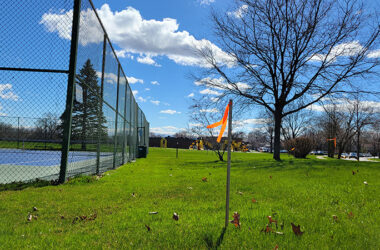COVID-19 cases in Homewood and Flossmoor have quickly returned to rates nearly as high as the spring peak of the virus in mid-May. The trend is statewide, with all regions seeing increases in cases and hospitalizations, and four regions have been ordered to implement additional mitigation measures. State officials continue to strongly urge residents to get flu shots to help fend off a dangerous concurrence of flu and COVID-19.
New surge arrives. As far back as April, before the COVID-19 pandemic had reached its first peak, Illinois health officials were already warning about a fall surge that could be worse than the first because it would coincide with the beginning of flu season.
The surge appears to have arrived. It appears to be worse than predicted.
After an uptick this summer in case numbers following the reopening — with some restrictions — of businesses and social activity, the numbers were relatively stable during late summer and early fall.
In the past week or so, the case numbers have spiked.
In Homewood, 32 new cases were reported in the past week. The Cook County Department of Public Health reports that the village has seen a 121 percent increase in new cases in the past two weeks compared to the previous two-week period.
Flossmoor has seen 15 new cases in the past week, and its increase over the past two weeks is 371 percent higher than the two previous weeks.
Both villages are seeing infection rates nearing the levels of the spring peak in early May.
On Oct. 19, Gov. J.B. Pritzker announced that every region in the state was seeing increases in key metrics, including case numbers, test positivity rates, hospitalizations and deaths.
Statewide, four regions will be under additional mitigation orders by Friday, including Region 5 in southern Illinois, Region 1 in the northwest corner of the state and suburban regions 7 and 8, which include neighboring counties Kane, DuPage, Will and Kankakee.
The additional restrictions include a temporary ban on indoor dining and bar service and a limit of 25 people for indoor gatherings.
Other milestones.
- The state’s seven-day rolling average positivity rate on Wednesday was 5.7 percent. The last time it was that high was June 6, when it reached 5.5 percent. There has been a 2 percent spike since Oct. 8.
- The state surpassed 300,000 cases on Oct. 3.
- The state surpassed 9,000 deaths on Oct. 13.
- The state set a new record for cases in one day on Oct. 16 with 4,554 new cases (there were more on Sept. 4, but that was due to a data processing backlog).
- During the spring peak from May 8-14, the state averaged 2,437 new cases per day. During the past week, from Oct. 15-21, the average has been 3,944 new cases per day.
State health officials urge people to get flu shots. Millions of people across the country get sick from the flu each year, and tens of thousands die from the virus. When flu season coincides with the COVID-19 pandemic, the results could be serious, according to Illinois health officials.
“This season more than ever, it is critical that Illinoisans get our flu shots,” said Illinois Department of Public Health Director Dr. Ngozi Ezike. “Flu and COVID-19 each can cause serious respiratory illness and co-infection could possibly lead to more severe illnesses, hospitalization and even death. While a vaccine for COVID-19 is still in development, a vaccine for flu already exists and is your best protection against flu.”
Everyone six months of age and older should get the seasonal flu vaccine. The vaccine is available in either a flu shot or in a nasal spray. More information on the types of flu vaccine can be found on the CDC website.
Administration touts testing records. In September, Gov. Pritzker and IDPH Director Ezike celebrated the state surpassing 5 million COVID-19 tests since the beginning of the pandemic.
The state also set a new one-day testing record when 74,286 specimens were collected on Sept. 19. (The 149,273 tests reported on Sept. 4 was the result of processing a backlog of data.)
“In a pandemic, widely available testing and faster results mean our people are safer,” Pritzker said. The state has seen a persistent rise in COVID-19 cases since reopening most businesses and activities earlier this summer, but the number of deaths per day has remained lower than the peak in May.
“Testing is a critical step in reducing the spread of the virus, because a positive test result begins the contact tracing process, which identifies who was exposed and needs to be quarantined to prevent further spread,” Ezike said.
Illinois ranks third in the number of daily tests over the last week, behind only California and New York, and currently does 3.5 times the amount of testing than the average state.
All state-run testing sites are available to residents free of charge, with no insurance required. Find testing sites here.
More funding for Medicaid providers. State officials announced in September the distribution of $140 million in federal Coronavirus Aid, Relief, and Economic Security (CARES) Act payments to Medicaid providers to offset the costs of fighting the coronavirus pandemic. This first round of funding will help Medicaid providers cover COVID-19 related costs, such as hazard pay for direct care workers, personal protective equipment purchases and other previously unbudgeted expenditures incurred.
The $58.8 million first wave of funding was specifically set aside for providers serving communities across the state that have had disproportionately higher cases of COVID-19 since the onset of the pandemic.
Many Medicaid providers, like safety net hospitals and federally qualified health centers, will receive first-round CARES payments automatically. In the first round of funding, $68 million in payments went to long-term care facilities, $50 million to federally qualified health centers and $23.5 million was distributed to safety net hospitals.



